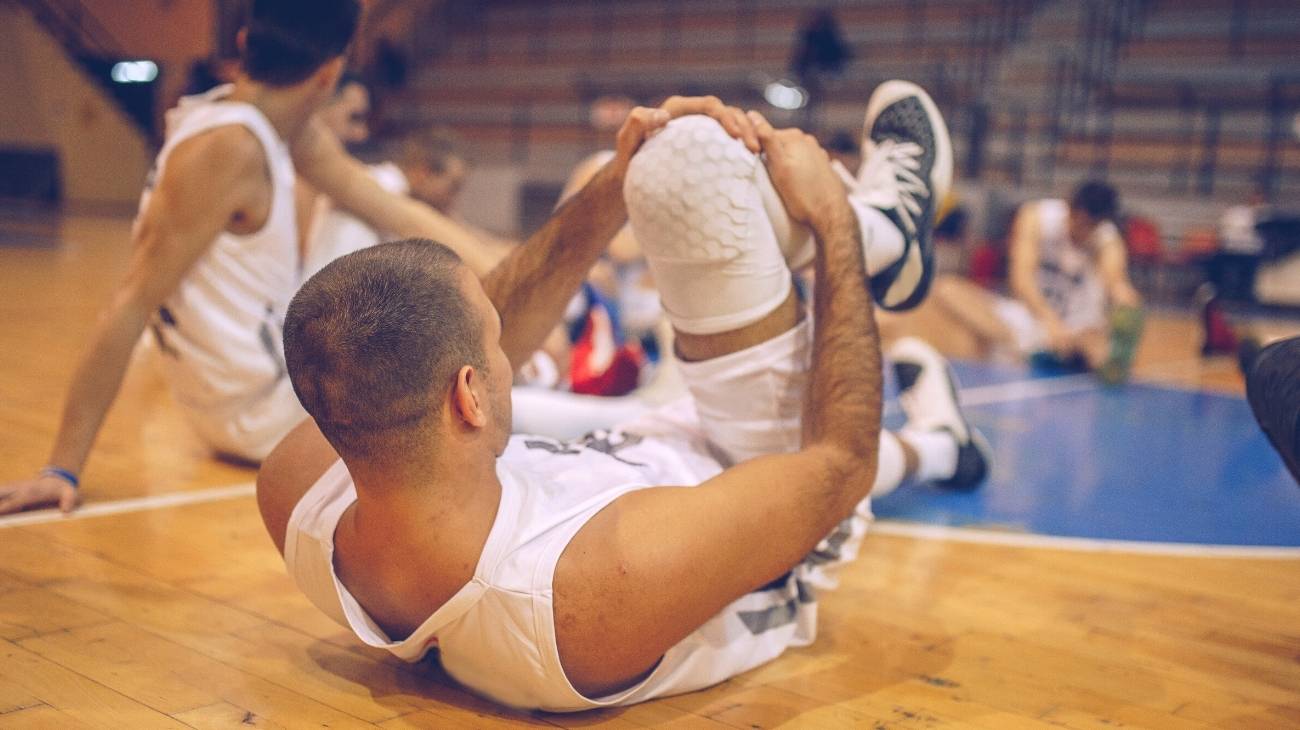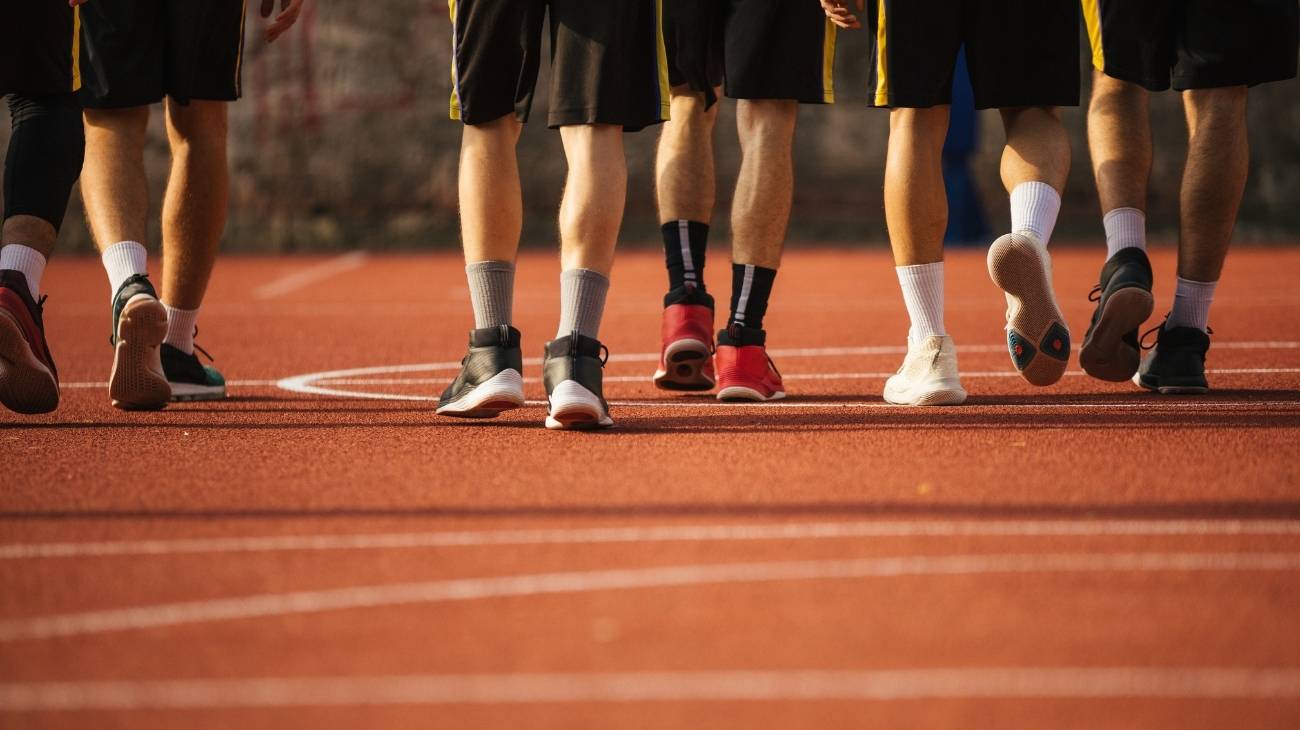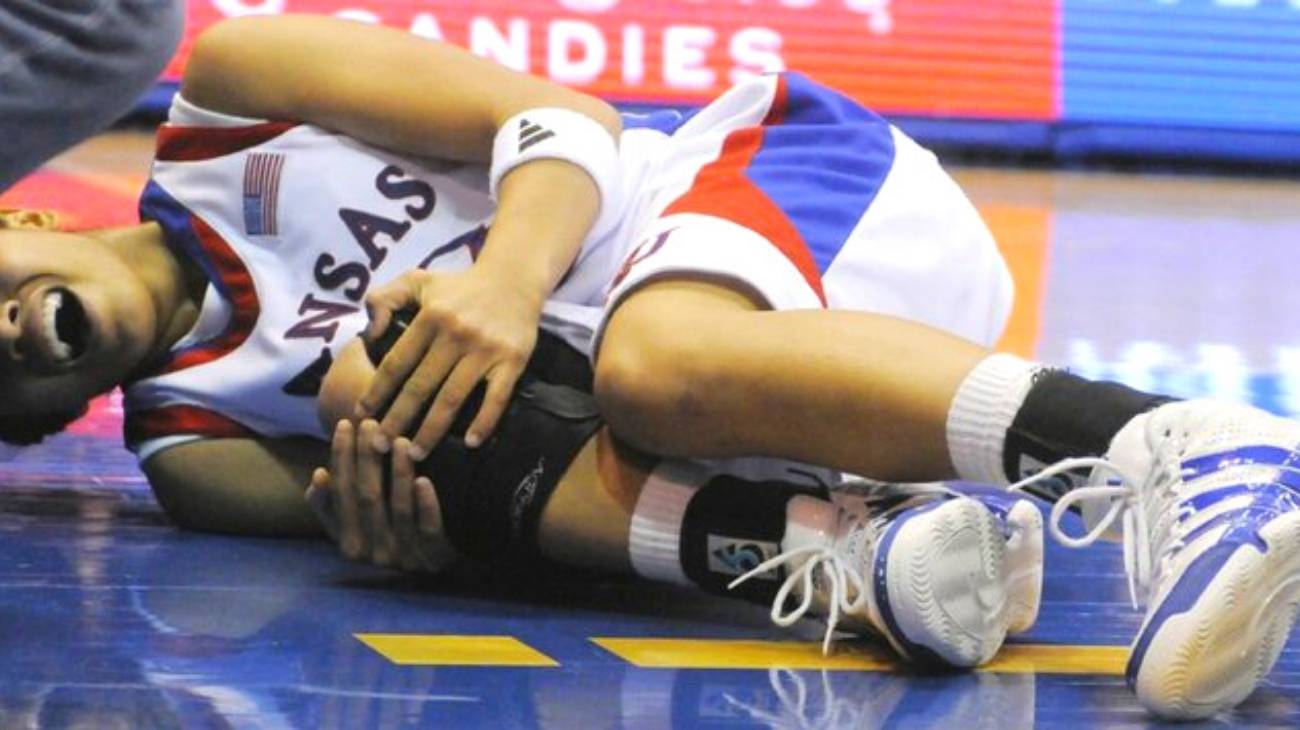Knees are essential for any high-impact athlete such as a basketball player. They need them for both running and jumping, so an injury to them makes it almost impossible to play the sport as regularly as they would like.
In this article we look at the most common knee injuries, so that you know the main risk factors for each one and what to do if you are suffering from them. You will also learn about the RICE therapy of applying first aid to minimise the extent of an injury in the first instance.
What are the most common types of knee injuries when playing basketball?
In the average person, knee injuries occur with advancing age or from accidents at home or at work. However, in basketball players, an injury is due to stress overload and subsequent wear and tear, as well as trauma from falls and severe blows to the joint.
Chondropathies
These are irregularities in the functioning of the cartilage. There are bones that are covered with articular cartilage such as the femur, tibia and patella, and with the effort generated by the demands of basketball in each game and the constant injuries to them, this covering becomes weaker and weaker.
When the injury is tackled early, the player can receive physiotherapy and strict monitoring afterwards, such as a balanced diet to regulate his muscle mass and weight so that the cartilage is under as little stress as possible. The clearest symptom of chondromalacia patella is severe pain in the joint, usually felt when standing up after prolonged sitting, as well as difficulty in bending and a lot of stiffness.
Knee sprains
Mild and moderate sprains are classified as grades 1 and 2, while a complete tear is a grade 3 sprain. In basketball players, the most commonly injured ligament is the anterior cruciate, although the posterior cruciate and lateral external cruciate also suffer.
Why does a sprain occur? In the knee, it is caused by the sudden movement of the player when changing direction while the joint is fixed. Basketball is an intense sport these days and the players' build and strength often go to extremes, overloading the joints and wearing them down, making them more fragile and prone to injury.
Meniscopathies
The menisci lie between the femur and the tibia and it is the inner meniscus that is most commonly injured. It provides joint stability, absorption and distribution of body weight load. There are traumatic and degenerative injuries, and basketball players are prone to both types due to the demands of the game, either from taking blows to the knees or from constantly using them when jumping to score or blocking.
The most common symptoms are mild pain at the onset of injury, joint effusion, difficulty bending and difficulty fully extending the knee. If you feel any of these for no apparent reason, it is essential to see a physiotherapist for an assessment of the extent of the injury, as surgery may be avoided in the first instance.
Cruciate ligament rupture
The knee has a pair of ligaments that cross each other and are called cruciate ligaments. These tissues are quite tough but a severe sprain can cause them to rupture, creating an ordeal for the basketball player as recovery is lengthy and relapses are common along the way.
The most common ligament to break is the anterior cruciate ligament, which is responsible for holding the lower head of the femur to the tibia. It occurs when there is an unnatural movement towards the inside of the knee, which may be due to a bad landing after a jump, causing it to partially or completely rupture.
Patellar tendonitis
The tendon that connects the kneecap to the calf muscles is one of the most commonly used in basketball. Hence this injury is known as "jumper's knee". It is caused by the wear and tear accumulated by constant jumping to dunk, make baskets, grab rebounds or block opponent's scores.
Best products for basketball knee injury recovery
Bestseller
-
2 Knee Compression Sleeve (Black/Gray)
£17,50 -
2 Knee Compression Sleeve (Green/Navy)
£17,50 -
2 Knee Compression Sleeve (Pink/Bordeaux)
£17,50 -
2 Patella Knee Strap (Black/Gray)
£12,95 -
2 Patella Knee Strap (Green/Navy)
£12,95 -
2 Patella Knee Strap (Pink/Bordeaux)
£12,95 -
Microwave Wheat Bag for Back Pain Relief (Extra Large) (Hearts)
£25,50 -
Microwave Wheat Bag for Back Pain Relief (Extra Large) (Oxford)
£25,50 -
Microwave Wheat Bag for Back Pain Relief (Extra Large) (Sport)
£25,50 -
Microwaveable Wheat Bag for Pain Relief (Hearts)
£17,50 -
Microwaveable Wheat Bag for Pain Relief (Oxford)
£17,50 -
Microwaveable Wheat Bag for Pain Relief (Sport)
£17,50 -
Wheat Bag for Microwave Classic Bottle Shaped (Hearts)
£17,50 -
Wheat Bag for Microwave Classic Bottle Shaped (Oxford)
£17,50 -
Wheat Bag for Microwave Classic Bottle Shaped (Sport)
£17,50
How to apply the RICE therapy to treat knee injuries in basketball?
It is a therapy welcomed by the sports industry to avoid future complications. The RICE therapy is the initial abbreviation for the therapy, but it received an update and is now called the PRICE protocol.
- Protection: The aim of this step is to immobilise the knee and protect it from receiving a further blow after the injury. Supplies such as common bandages and elastic bandages are used, and sometimes it is even necessary to splint, but everything will depend on the doctor's initial diagnosis.
- Rest: Although it is the simple action of stopping sporting and physical activity, it is the most important part as the inflammatory process is susceptible to movement after injury. The body needs to rest in order to recover and only when indicated by your doctor, after the relevant assessment, should you start walking with light support on the affected knee.
- Ice: Place some ice wrapped in a cloth on the side of the knee where you notice the greatest amount of swelling and leave it for a few minutes to make the swelling subside a little.
- Compression: With a bandage that completely surrounds the knee, apply some pressure to prevent the swelling from progressing further, being careful not to squeeze too tightly so as not to damage the affected ligaments.
- Elevation: In this case you should lie on your back and raise your knee above the level of your heart, so that less blood reaches the joint and inflammation is not encouraged.
We remind you that the PRICE therapy is only effective for minor injuries, as serious injuries will require other types of treatment ranging from sports massage, cryotherapy and thermotherapy to surgery.
References
- Emerson, R. J. (1993). Basketball knee injuries and the anterior cruciate ligament. Clinics in sports medicine, 12(2), 317-328. https://europepmc.org/article/med/8481968
- Gray, J., Taunton, J. E., McKenzie, D. C., Clement, D. B., McConkey, J. P., & Davidson, R. G. (1985). A survey of injuries to the anterior cruciate ligament of the knee in female basketball players. International journal of sports medicine, 6(06), 314-316. https://www.thieme-connect.com/products/ejournals/abstract/10.1055/s-2008-1025861
- Cumps, E., Verhagen, E., & Meeusen, R. (2007). Prospective epidemiological study of basketball injuries during one competitive season: ankle sprains and overuse knee injuries. Journal of Sports Science and Medicine, 6(2), 204-211. https://www.jssm.org/researchjssm-06-204.xml.xml
- Molnar, T. J., & Fox, J. M. (1993). Overuse injuries of the knee in basketball. Clinics in sports medicine, 12(2), 349-362. https://europepmc.org/article/med/8481970
- Arendt, E., & Dick, R. (1995). Knee injury patterns among men and women in collegiate basketball and soccer: NCAA data and review of literature. The American journal of sports medicine, 23(6), 694-701. https://journals.sagepub.com/doi/abs/10.1177/036354659502300611
- Dick, R., Hertel, J., Agel, J., Grossman, J., & Marshall, S. W. (2007). Descriptive epidemiology of collegiate men’s basketball injuries: National Collegiate Athletic Association Injury Surveillance System, 1988–1989 through 2003–2004. Journal of athletic training, 42(2), 194. https://www.ncbi.nlm.nih.gov/pmc/articles/PMC1941286/
- Bolotin, A., & Bakayev, V. (2016). Efficacy of using isometric exercises to prevent basketball injuries. Journal of Physical Education and Sport, 16(4), 1177. http://efsupit.ro/images/stories/nr4.2016/art188.pdf
- Padua, E., D’Amico, A. G., Alashram, A., Campoli, F., Romagnoli, C., Lombardo, M., … & Annino, G. (2019). Effectiveness of warm-up routine on the ankle injuries prevention in young female basketball players: a randomized controlled trial. Medicina, 55(10), 690. https://www.mdpi.com/1648-9144/55/10/690
- Sonzogni Jr, J. J., & Gross, M. L. (1993). Assessment and treatment of basketball injuries. Clinics in sports medicine, 12(2), 221-237. https://europepmc.org/article/med/8481963
- McKay, G. D., Goldie, P. A., Payne, W. R., Oakes, B. W., & Watson, L. F. (2001). A prospective study of injuries in basketball: a total profile and comparison by gender and standard of competition. Journal of Science and Medicine in Sport, 4(2), 196-211. https://www.sciencedirect.com/science/article/abs/pii/S144024400180030X









































